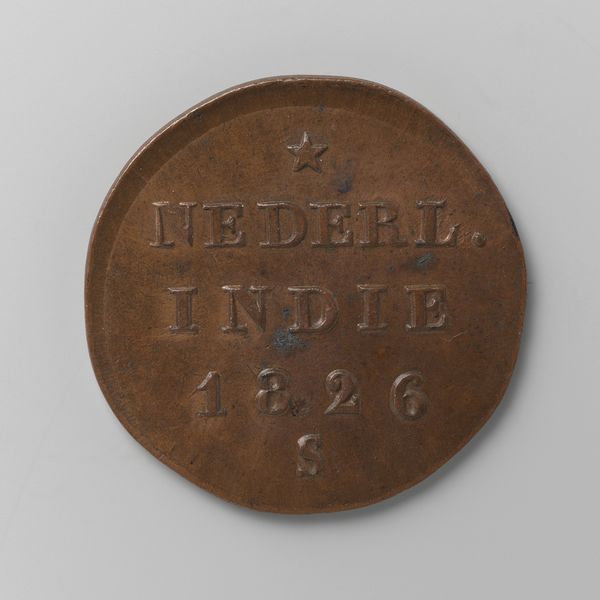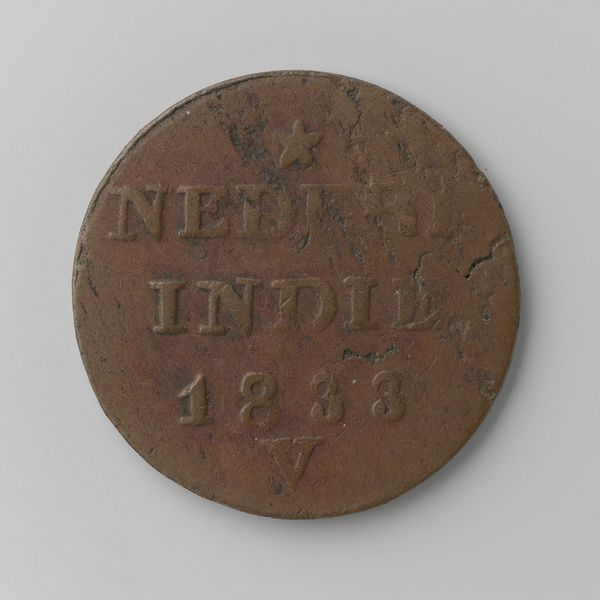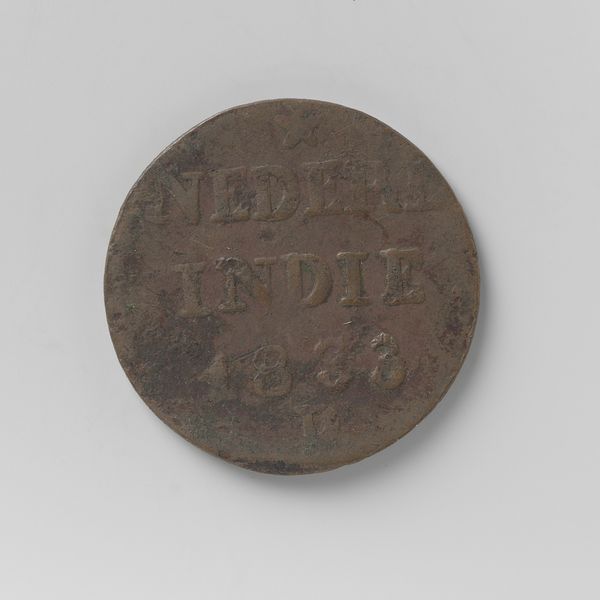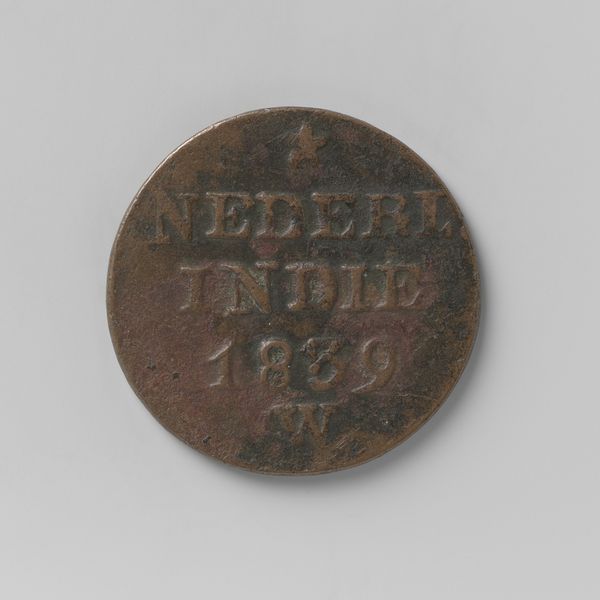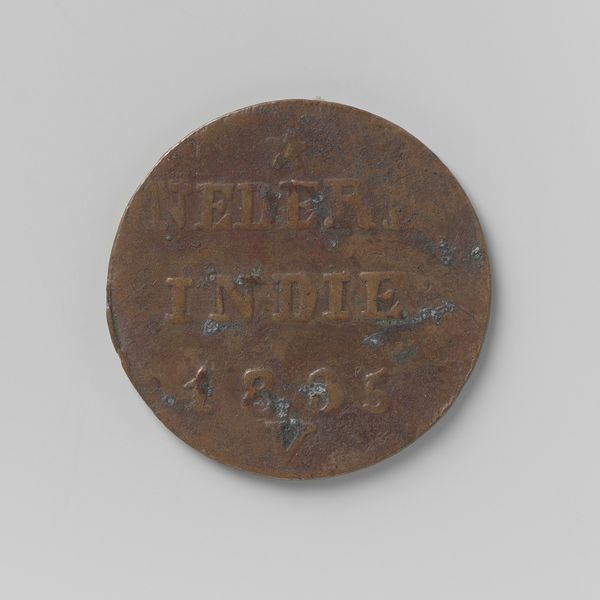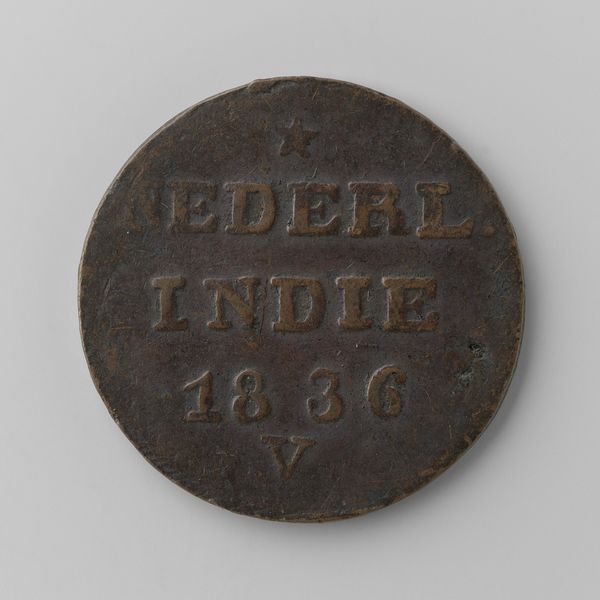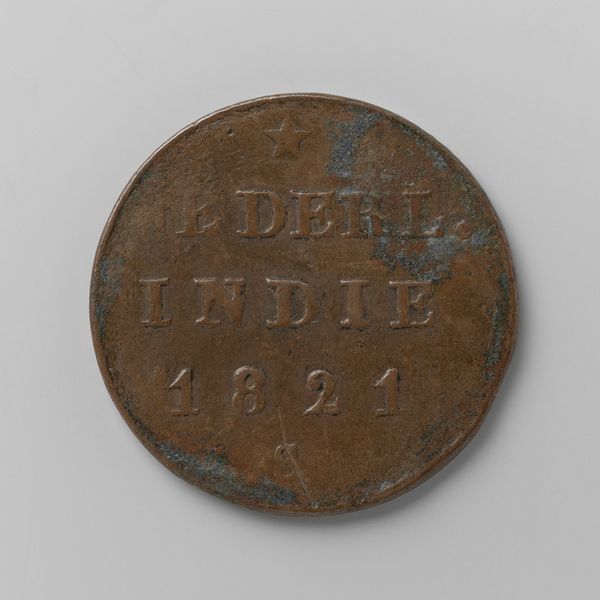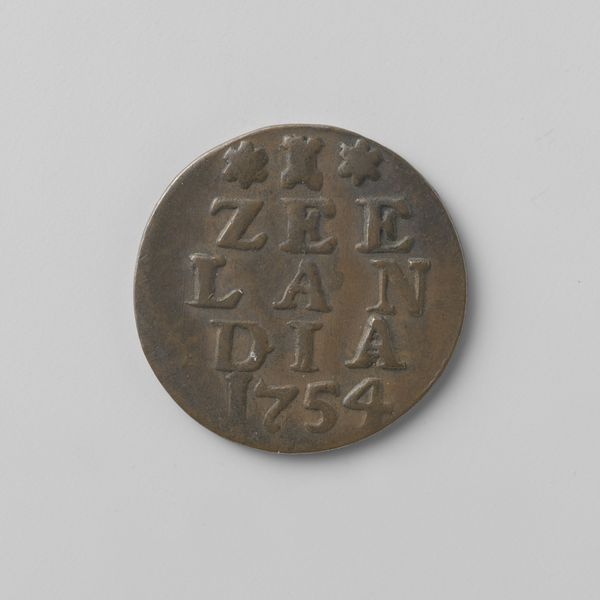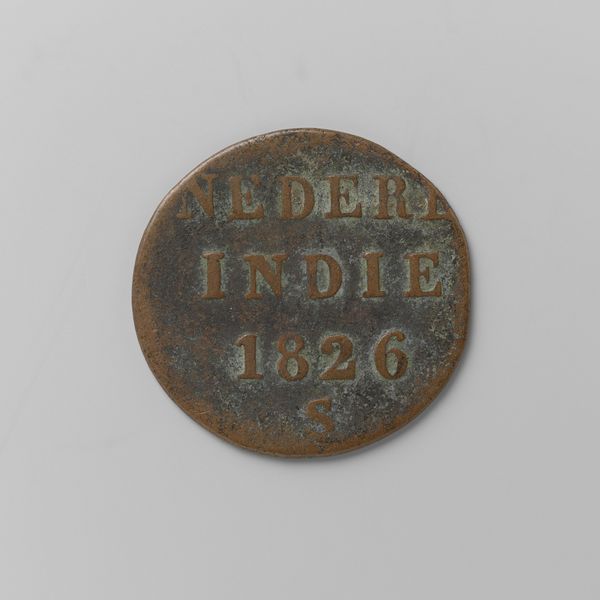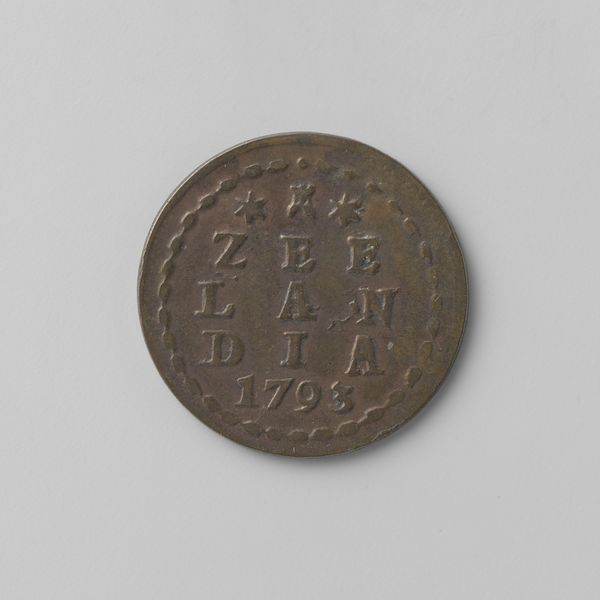
Zilveren afslag van een 2 cent van Nederlands Indië,1836 1836
0:00
0:00
mixed-media, print, metal, engraving
#
mixed-media
# print
#
metal
#
geometric
#
embossed
#
coin
#
engraving
Dimensions: diameter 2.6 cm, weight 6.82 gr
Copyright: Rijks Museum: Open Domain
This is a silver trial strike for a 2-cent coin from the Dutch East Indies, made in 1836 under King William I. At first glance, a coin seems far removed from the realm of art. But objects like this are powerful cultural artifacts. This one speaks volumes about the Netherlands’ colonial ambitions and their economic underpinnings. The Dutch East Indies, now Indonesia, was a crucial source of wealth for the Netherlands, extracted through often brutal means. The coin’s inscription, “Nederl. Indie,” is not just a geographical marker, but a bold assertion of ownership and control. By placing his imprimatur on this currency, King William was literally stamping his authority onto the colony. This act helped to create a visual language of power and subordination. Understanding the broader historical context – the plantation system, the forced labor, the unequal trade agreements – is essential to interpreting this seemingly simple object. A closer look at the archives, economic records, and colonial correspondence can reveal the full story behind this coin and its place in a complex web of power and exploitation.
Comments
No comments
Be the first to comment and join the conversation on the ultimate creative platform.

